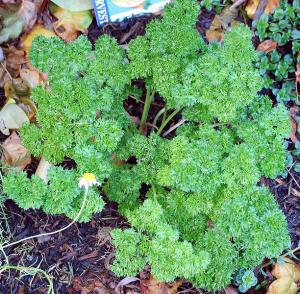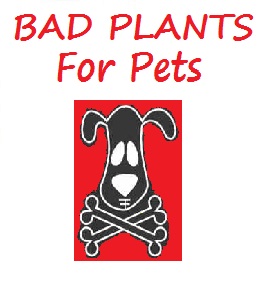Spring Parsley

Widely used in Middle Eastern, European, and American cooking, Parsley (Petroselinum crispum) is generally not considered to be a potentially toxic plant, however it does contain furanocoumarins (5 and 8-Methoxypsoralen (bergapten and xanthotoxin respectively)); toxins known to cause photosensitivity in animals. Native to the central Mediterranean region (southern Italy, Algeria and Tunisia), naturalized elsewhere in Europe, Parsley is widely cultivated as an herb, a spice and a vegetable. Garden parsley is a bright green, hairless, biennial, herbaceous plant the grows well in temperate climates, or an annual herb in subtropical and tropical areas. Parsley, although not a usual ingredient in the diets of domestic animals, is commonly used as an herb for human consumption. As a result it is widely cultivated and a common addition to many home gardens where it is possible that a pet or grazing animal could come into contact with and potentially ingest it.
All parts of the plant, but especially the seeds, should be considered toxic for pets and have been shown to cause photosensitization in companion animals, cattle, sheep, fowl, and humans as a result of large ingestion or skin contact with the plant and subsequent exposure to sunlight. Additionally large ingestions of parsley have been shown to cause uterine contractions which could prematurely induce labor in pregnant animals
Photosensitization is a clinical condition in which areas exposed to light and lacking significant protective hair, wool, or pigmentation become hyperreactive to sunlight due to the presence of photodynamic agents. When animals ingest large amounts of the plant their body is unable to fully metabolize it. This allows photoreactive compounds to be deposited throughout the tissues of the body. When exposed to the UV radiation of sunlight, the now photoreactive tissue reacts by becoming energized. This reaction yields free radicals that literally “burn” the tissue. The affected tissue will become wrinkled, blistered, or split apart creating open wounds, and the surface may eventually slough away. It may take weeks to recover and obvious scarring may remain forever. Additionally the tissue damage may be so severe that it completely debilitates the animal or allows necrosis and secondary infections that kill the animal. Even more damaging than how it affects the skin is how it affects the eyes, in that animals may experience cloudy corneas, conjunctivokeratitis and permanent scaring of the eyes that leaves the animal blind.
The exact amount needed to create intoxication in companion animals has not been fully documented. The documentation that is available suggests that ingestion of a small amount is unlikely to cause intoxication and will provide more benefit than harm. In animals such as dogs or cats, ingesting a moderate amount of fresh parsley will most likely result in gastrointestinal upset and the animal will vomit out the plant without any other negative effects. In grazing animals, a moderate ingestion, will in the vast majority of cases, pass harmlessly through the animals system. In holistic circles, parsley or parsley extracts are given to companion animals as a breath freshener, diuretic and mild laxative. Studies have also found that parsley has both hypotensive and antimicrobial properties. It has also been used to treat liver problems and gallstones.
There is no specific antidote for ingestion of Petroselinum crispum, as such treatment is going to be palliative. In the event the animal is witnessed eating the plant or identifiable plant matter is found in the mouth remove any existing plant matter from the mouth and flush the mouth thoroughly with water. In dogs and cats, if it is believed that the animal may have consumed a massive amount of parsley vomiting may be induced by giving a teaspoon or less (size dependent) of 3% hydrogen peroxide orally; a cathartic to stimulate elimination may prove beneficial. Care should be taken before administering a chemical carthatic as parsley has laxative effects; the combination of the two could put the pet at risk for dehydration requiring fluid therapy. In the overwhelming majority of cases where only a moderate amount was ingested the animal will make a full recovery without the aid of treatment.
In cases of a massive ingestion gastric lavage and the administration of activated medical charcoal may be very useful in ridding the body of the toxin. If the animal begins to suffer photosensitivity it should be kept away from sunlight and fully shaded. Grazing animals suffering from photosensitivity should be housed in a cool dark place during the day and only allowed to graze during darkness. The severe stress of photosensitization and extensive skin necrosis can be highly debilitating and increase mortality. Corticosteroids, given parenterally in the early stages, may be helpful. Secondary skin infections and suppurations should be treated with basic wound management techniques, and fly strike prevented. The skin lesions heal remarkably well, even after extensive necrosis. The prognosis for animals that receive treatment is good, and most will recover in days to weeks; although visible scarring and/or damage to the eyes may remain for the life of the animal.




